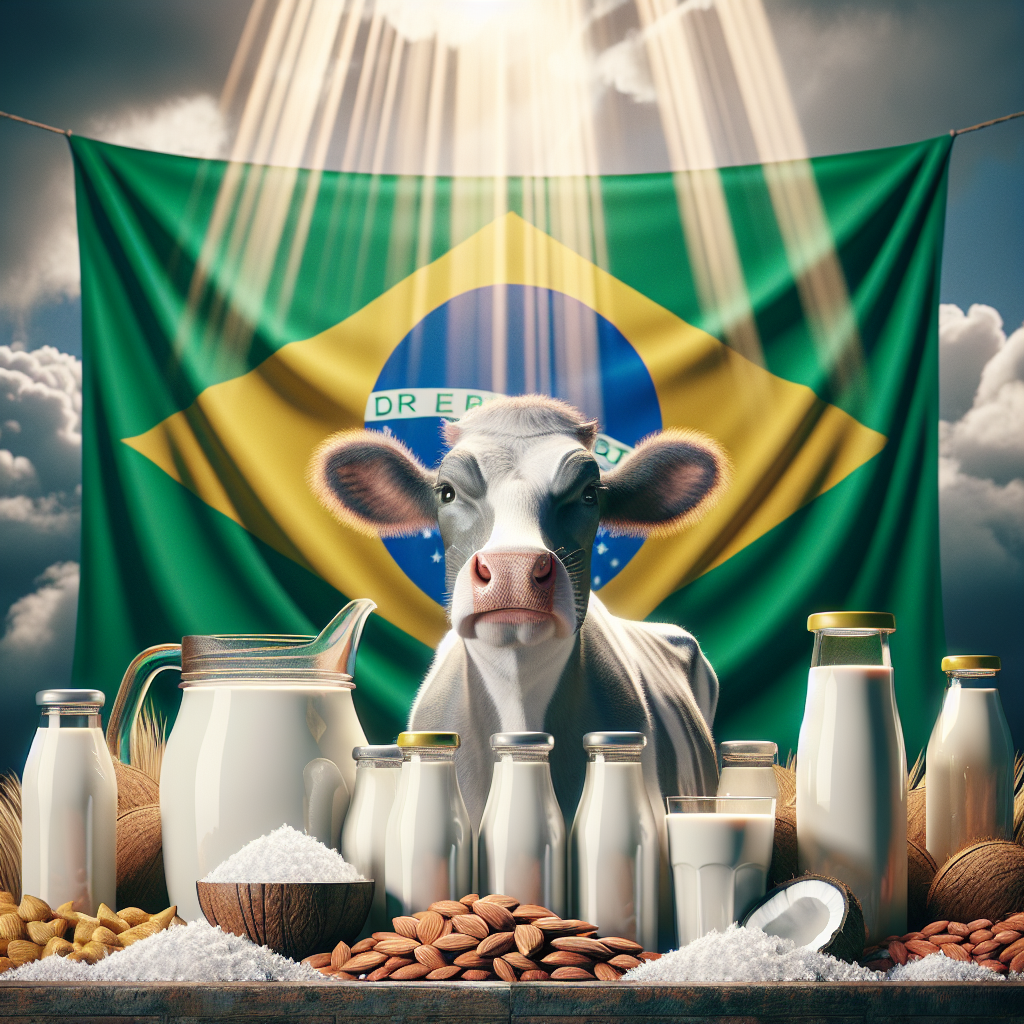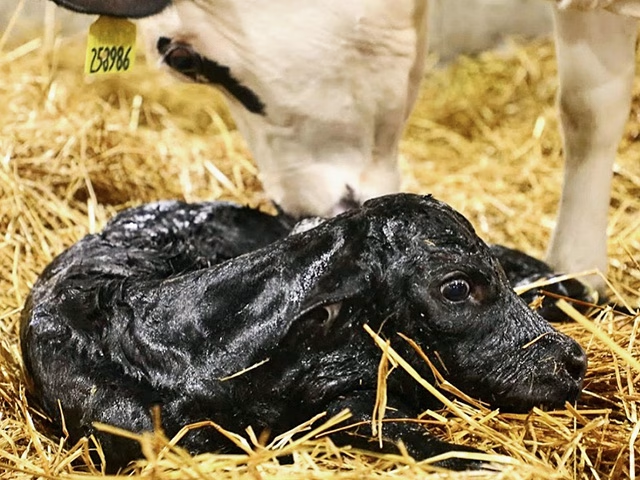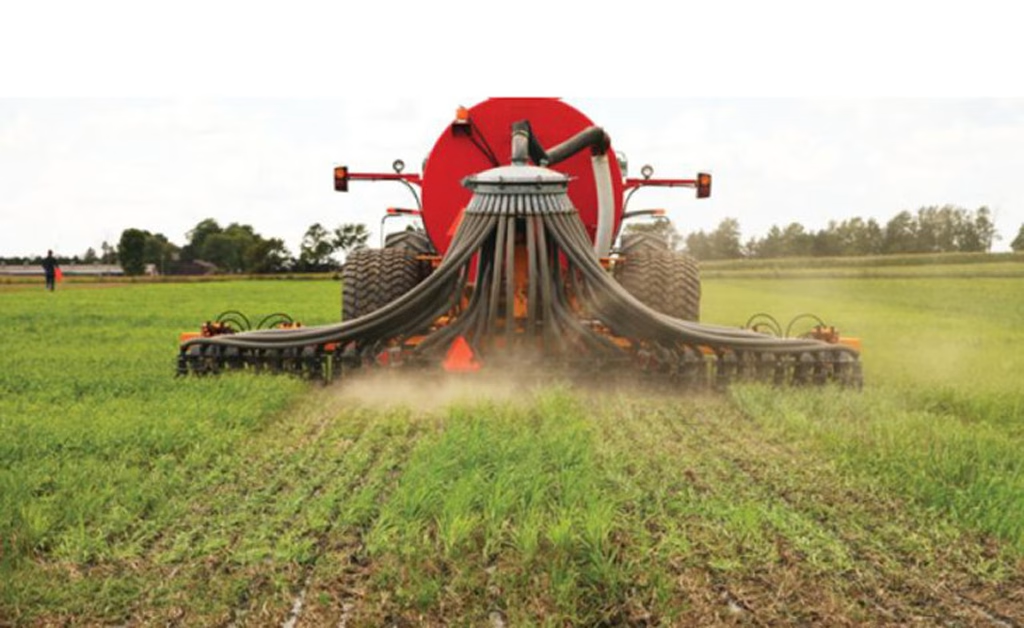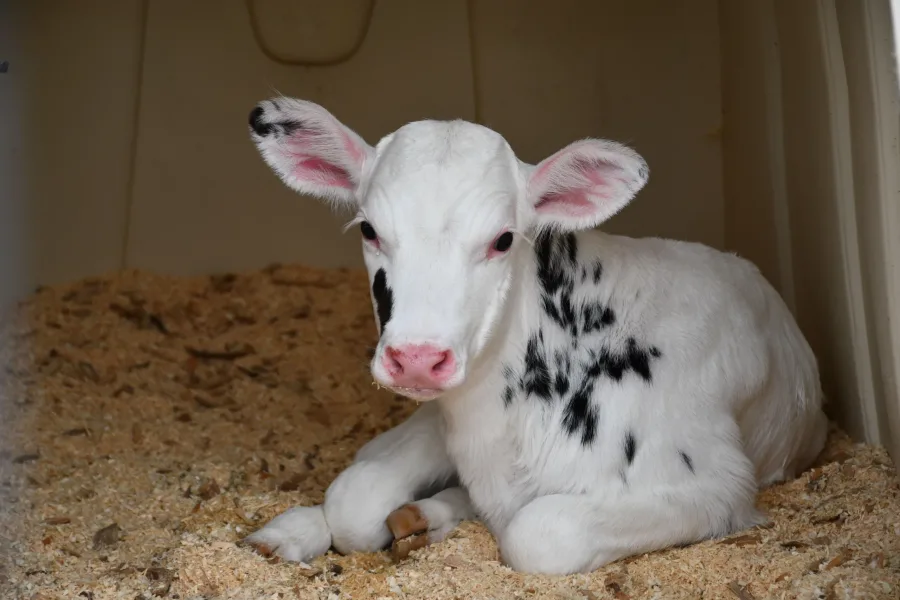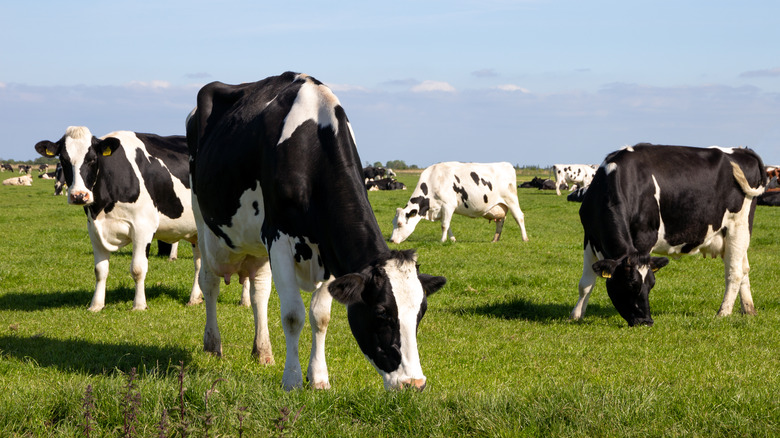Explore how New Zealand is leading the charge in cutting methane emissions in the dairy sector. Are groundbreaking vaccines and feed additives the key to a greener future?
Summary:
As global scrutiny on agricultural emissions intensifies, all eyes are on New Zealand—a leader in innovative strategies to curb the methane footprint of its dairy sector. The recent Agriculture and Climate Change conference highlighted crucial advancements in methane mitigation technologies, focusing on vaccines and bolus solutions, with experts like Dr. Harry Clark advocating for their transformative potential. Companies such as Ruminant BioTech, poised to release a bolus by 2025, and ArkeaBio, aiming for a methane-reducing vaccine within five years, represent the forefront of this shift. Their breakthroughs reinforce the importance of sustainable practices, tackling one of the most potent greenhouse gases and providing a blueprint for global adoption. While technological solutions like feed additives, vaccines, and boluses face cost, practicality, and regulatory approval challenges, New Zealand’s progress signifies a significant stride towards reducing enteric methane emissions without compromising the country’s pastoral farming ethos.
Key Takeaways:
- New Zealand is pioneering efforts in developing a methane-reducing vaccine, targeting natural immunity against methanogenic archaea in cattle.
- The methane vaccine aims to stimulate cows to produce antibodies in their saliva, reducing methane production without continuous chemical feed additives.
- Challenges replicating lab successes in real-world cattle rumens, prompting increased investment and global collaboration.
- Alternative methane reduction strategies include feed additives like Agolin and Brominata, which show promise in controlled emissions reduction.
- This innovative approach aligns with New Zealand’s agricultural goals and presents potential global implications for reducing agricultural greenhouse gas emissions.

New Zealand stands at the forefront of the global mission to combat methane emissions, a critical aspect of addressing climate change that directly impacts the dairy industry worldwide. Recent explorations at the country’s Climate Conference showcased innovative enteric methane mitigation strategies, such as methane-inhibiting boluses with electronic tracking and advancements in vaccine research for natural methane suppression within cattle. These efforts highlight New Zealand’s bold resolve to tackle one of the most potent greenhouse gases, underscored by Dr. Harry Clark’s statement: “We see it as such an attractive and practical way to reduce methane emissions. It would also be cost-effective because vaccines are cheaper to manufacture than feeding something special daily.”
Shifting Gears: The Dairy Industry’s Methane Challenge
The global dairy industry is urgently under increasing pressure to reduce its environmental impact, particularly methane emissions. Methane, a potent greenhouse gas, significantly contributes to climate change, having more than 25 times the impact of carbon dioxide over a century (EPA). This underscores the critical need for effective strategies to curb emissions in the dairy farming sector.
The pressure is mounting on dairy farmers. Stricter regulations focusing on sustainability and consumers wanting environmentally friendly products push them to reduce methane emissions. Lowering the carbon footprint has become a competitive edge as consumers become more eco-aware.
Methane mainly comes from enteric fermentation, a normal digestive process in animals like cows that releases methane as a byproduct. This challenges dairy farmers in terms of maintaining productivity while reducing emissions. This task seems overwhelming given the traditional methods and farmers’ limited budgets.
Reducing methane emissions involves multiple challenges. Technological solutions such as feed additives, vaccines, and boluses are promising. However, each has hurdles, such as cost, practicality, and regulatory approval. The ongoing research into these tactics offers hope but highlights how complex it can be to put them into widespread use.
Additionally, creating one-size-fits-all solutions is challenging due to different regional farming methods and climate conditions, which influence how successful these solutions might be. Dairy farmers must navigate these technical and regulatory challenges while staying economically viable—a tricky balancing act demanding innovation, money, and teamwork across the industry.
To sum up, the issue of methane emissions in the dairy industry involves multiple factors, including environmental and economic pressures. While technological progress offers ways forward, achieving an absolute reduction in emissions requires ongoing effort and flexibility from everyone involved.
Innovating Pasture-Raised Solutions: New Zealand’s Groundbreaking Methane Vaccine
New Zealand is pioneering a new method of reducing methane emissions, tackling specific issues faced by its dairy industry. Because most of its cattle feed directly from pastures, regular feed-based methods of reducing methane don’t always work well. This has driven New Zealand to innovate a new solution: a vaccine.
This vaccine idea is promising, especially for countries like New Zealand, where grazing is common. Unlike chemical solutions that require regular feeding, this vaccine would encourage cows to produce natural antibodies that tackle methane-producing germs in their stomachs. This could change the dairy industry by cutting emissions effectively while sticking to traditional grazing methods.
The potential impact of this vaccine is significant, not only in terms of reducing environmental damage but also in maintaining the strength of the dairy business. By leveraging the cow’s natural processes to reduce emissions, the industry could achieve substantial environmental benefits without incurring high costs. The development of this vaccine marks a significant step towards sustainable dairy farming, positioning New Zealand at the forefront of agricultural technology. As New Zealand continues investing in this promising technology, it demonstrates a clear commitment to a future where reducing farm methane is feasible and prudent.
Leading the Charge: Transformative Insights from New Zealand’s Climate Conference on Methane Mitigation
The New Zealand Climate Conference was a pivotal event where leading experts discussed innovative ways to make farming more sustainable. A key focus was reducing methane emissions from dairy cattle, a significant environmental challenge. Experts like Dr. Rod Carr and Dr. Harry Clark shared groundbreaking ideas that inspire hope and motivation for a more sustainable future in the dairy industry.
Dr. Rod Carr highlighted the country’s focus on innovation in farming practices, especially the potential of boluses. He discussed the upcoming tribromomethane bolus, which is expected to hit the market by 2025 and could significantly reduce methane emissions. Carr emphasized how these technologies could be crucial, particularly for New Zealand’s pasture-based farming systems.
Dr. Harry Clark, the director of the New Zealand Agricultural Greenhouse Gas Research Centre, discussed new vaccine developments. He explained how using the cow’s biological systems could reduce methane production. He shared data showing vaccines can reduce methane by 10% to 15%, supporting the idea that this method could work. His insights highlighted the potential of natural solutions that fit New Zealand’s dairy farming style.
Carr and Clark showcased an industry ready for significant changes through research and development. Their talks at the conference supported a vision of environmentally sustainable agriculture, balancing new ideas with real-world use in pasture-based systems.
Turning the Tide: Breakthrough Methane Mitigation Technologies Spotlighted at New Zealand Conference
At the recent Agriculture and Climate Change conference in New Zealand, new technologies focused on reducing methane emissions were highlighted. Ruminant BioTech’s methane-inhibiting bolus and ArkeaBio’s vaccine trials are two of the most promising developments.
Ruminant BioTech is progressing with its bolus, which will soon be available on the market. This bolus uses synthetic tribromomethane inspired by seaweed, which is known to reduce methane emissions. Expected to be released by the end of 2025, the bolus effectively cuts methane emissions. It includes an electronic tag to verify whether cattle have been treated. This innovation is a significant step forward from current methods that rely on feeding cattle special diets.
At the same time, ArkeaBio is working on vaccine trials to reduce methane emissions from cattle by using the animals’ natural processes. Reports from the conference indicate that this vaccine could cut methane emissions by 10% to 15% in vaccinated cattle. Although the vaccine is still being tested and is expected to be ready for the market within five years, the early results suggest it could change how methane is managed in pasture-raised cattle. These developments show how technology and farming can work together to fight climate change, with New Zealand leading the way in reducing methane emissions from cows.
Unraveling the Methane Mystique: How Vaccines and Bolus Technologies Aim to Cleanse the Cow’s Breath
Methane production in ruminants is a natural process in their unique digestive system. At the core of this process are microorganisms called methanogenic archaea. These microbes live in the oxygen-free environment of the rumen and use byproducts from fermentation. When the cow digests its feed, it breaks down carbohydrates into volatile fatty acids, carbon dioxide, and hydrogen. The methanogenic archaea use hydrogen and carbon dioxide to make methane (CH4), which the cow releases through belching, adding to greenhouse gas emissions.
Tackling the problem of methane emissions requires innovation, such as vaccines and bolus technologies. The vaccine aims to boost the cow’s immune system to create antibodies that attack methanogenic archaea. Researchers focus on specific proteins in these archaea to make antibodies that prevent them from making methane. These antibodies enrich the cow’s saliva, and once in the rumen, they stick to and weaken the archaea, reducing methane emissions [source needed].
Alternatively, bolus technology uses direct chemical methods. Companies like Ruminant BioTech have developed a bolus containing synthetic tribromomethane, a compound in some seaweeds that effectively reduces methane production. When taken orally, this bolus releases the compound in the rumen, blocking key enzymes needed to produce methane. This approach suits grazing systems where regular feed additives aren’t practical.
Both technologies use advanced biological and chemical knowledge to reduce methane emissions, a primary environmental concern in livestock farming. As these methods undergo more tests and trials, they promise to reduce the dairy industry’s carbon footprint worldwide.
Balancing the Budget: Navigating Economic and Practical Realities in Methane Reduction for Dairy Farming
When examining the costs and practicality of reducing methane in dairy farming, significant factors must be considered. Feed additives and vaccines offer different benefits and challenges.
Feed additives like Agolin and Brominata are cost-effective in farms where cows eat a standard diet. They help cut methane and improve output. For instance, Agolin costs 4 to 6 cents per cow daily but can save you up to 60 cents in performance boosts. But for grazing farms, like New Zealand, where cows eat as they roam, it’s hard to deliver these feed solutions consistently, making them less practical.
On the other hand, vaccines seem promising for farms where cows roam. Given once or occasionally, they fit well with grazing patterns and help cows naturally lower methane without daily effort. Although initial research costs are high, vaccines could be a low-cost solution due to cheap manufacturing. Dr. Clark’s push for more investment shows hope for a breakthrough that could change grazing-based dairy farming worldwide.
Bovaer, 3-NOP, works well in controlled settings but has issues in pasture environments. Its price remains unclear because it is not guaranteed to work across different systems and is waiting for more trials and approval.
To sum up, cutting methane in dairy farming requires appropriate strategies. While feed additives are helpful in controlled settings, they face logistical problems in grazing. Vaccines, however, could be a sustainable fix for grazing farms if research overcomes its current limitations.
New Zealand’s Methane Innovations: A Global Blueprint for the Dairy Industry
New Zealand is leading the way in reducing methane, and its new ideas are a light on the global dairy industry. These changes could extend beyond New Zealand, offering new possibilities for dairy farms worldwide. Creating a vaccine for livestock that cuts methane emissions could become a helpful tool globally, aligning with growing concerns about farming’s environmental impact.
Using these technologies in different farming areas requires careful planning. Countries with grazing systems, like New Zealand, might easily use these vaccines and bolus techniques to boost their sustainability. Feed additives could be adjusted to local diets in areas with more intensive feeding systems, effectively combining old and new methods.
The idea of working together internationally is exciting. Partnerships between research groups and governments could speed up the use of these new ideas worldwide. By sharing research, improving vaccines for different climates, and agreeing on risk measures, a firm plan for reducing methane can be created.
New Zealand’s achievements might encourage dairy-producing countries worldwide to form teams to share technology and align policies. This teamwork not only boosts the impact of these improvements but also strengthens the industry’s commitment to reducing greenhouse gases globally. As the world tackles climate goals, using New Zealand’s innovations could play a key role in creating a more sustainable future for global dairy farming.
Navigating Rocky Terrain: Challenges and Innovations in Methane Reduction Technologies
The new technologies for reducing methane show promise but also present challenges. One big issue is ensuring the vaccines work well in real-life farming conditions. Although lab results look good, we must see the same results in the fields, especially in different environments where cows live and graze.
Using bolus and feed additives is also tricky. Farmers must ensure that every cow gets the right amount, especially when cows roam over large areas. These solutions also need to be affordable for farmers.
Researchers are working hard to solve these problems. They are trying to improve vaccines so that they work well everywhere. They are also learning more about the tiny organisms in cows that produce methane to improve these vaccines. Companies are creating new technology to ensure that boluses work well and fit into regular farming without costing too much.
Moving forward, it’s essential to keep investing money and effort into these technologies. Everyone involved in the dairy industry must collaborate to support research and develop trust among farmers who will use these new ideas.
By facing these challenges and pushing for new ideas, the dairy industry can lead the fight against climate change, offering solutions that could work worldwide.
The Bottom Line
The efforts discussed in this article show New Zealand’s leading role in reducing methane, setting an example for global agricultural sustainability. The development of vaccines and bolus technologies highlights an innovative approach tailored to pasture-based farming systems. These advancements emphasize New Zealand’s proactive approach and have broader implications for dairies worldwide. As the industry deals with emissions, New Zealand’s methods offer practical solutions that can change farming practices globally. Therefore, dairy professionals must keep up with these new technologies, considering them for possible use in their operations. Doing so aligns them with trends that improve environmental responsibility and economic viability. The future of sustainable dairy farming depends on informed decisions and strategic adoption, making it crucial for stakeholders to stay engaged with ongoing advancements in this field.
Learn more:
- Effective Feeding Strategies to Lower Emissions: Reducing Dairy Farm Methane
- Embracing the Future: The Latest Innovations in Dairy Technology and their Impact on the Industry
- World’s First Carbon-Neutral Dairy Farm: The Exciting Race to Eco-Friendly Farming
 Join the Revolution!
Join the Revolution!
Bullvine Daily is your essential e-zine for staying ahead in the dairy industry. With over 30,000 subscribers, we bring you the week’s top news, helping you manage tasks efficiently. Stay informed about milk production, tech adoption, and more, so you can concentrate on your dairy operations.







 Join the Revolution!
Join the Revolution!
